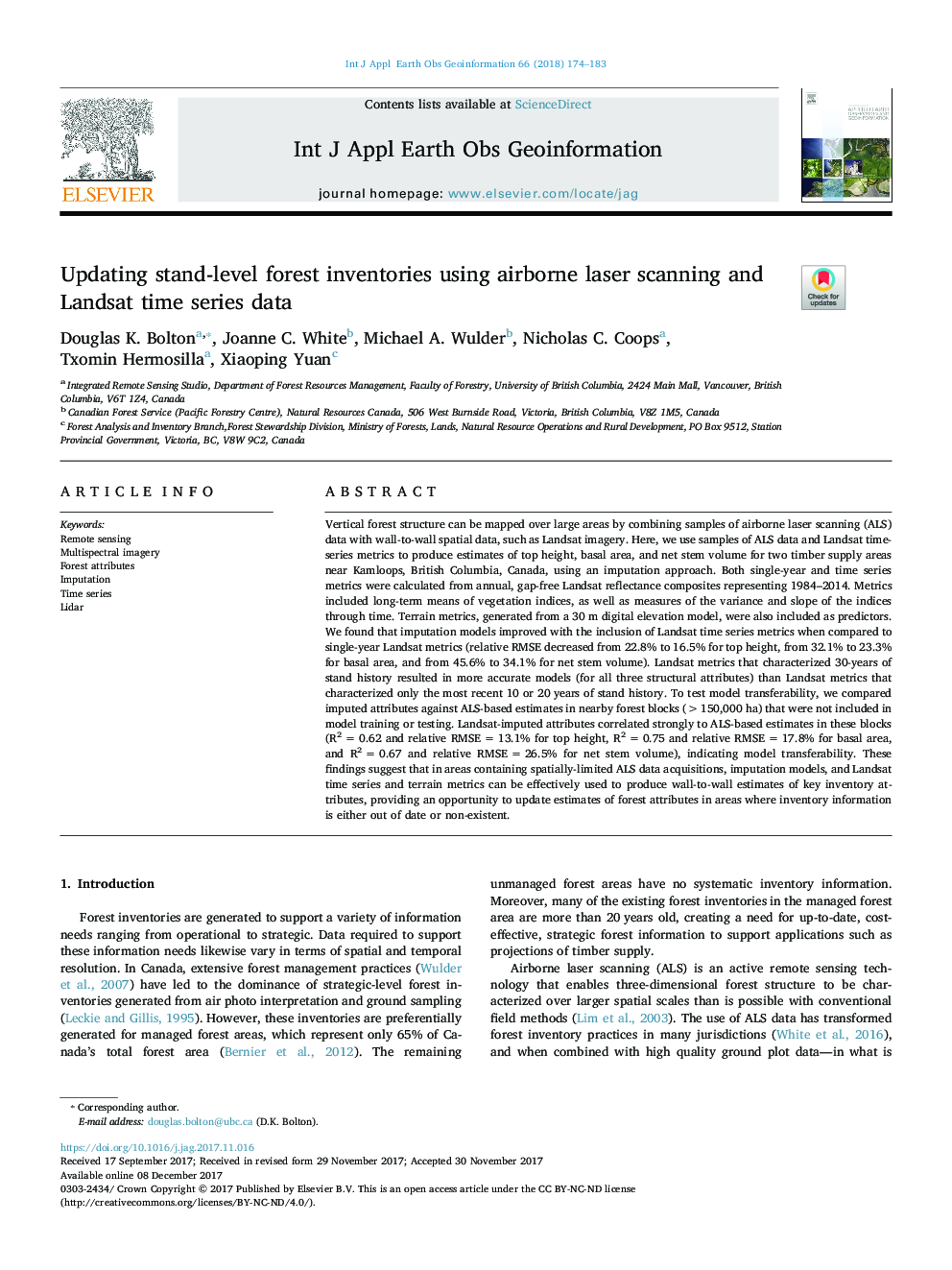| Article ID | Journal | Published Year | Pages | File Type |
|---|---|---|---|---|
| 8867995 | International Journal of Applied Earth Observation and Geoinformation | 2018 | 10 Pages |
Abstract
Vertical forest structure can be mapped over large areas by combining samples of airborne laser scanning (ALS) data with wall-to-wall spatial data, such as Landsat imagery. Here, we use samples of ALS data and Landsat time-series metrics to produce estimates of top height, basal area, and net stem volume for two timber supply areas near Kamloops, British Columbia, Canada, using an imputation approach. Both single-year and time series metrics were calculated from annual, gap-free Landsat reflectance composites representing 1984-2014. Metrics included long-term means of vegetation indices, as well as measures of the variance and slope of the indices through time. Terrain metrics, generated from a 30Â m digital elevation model, were also included as predictors. We found that imputation models improved with the inclusion of Landsat time series metrics when compared to single-year Landsat metrics (relative RMSE decreased from 22.8% to 16.5% for top height, from 32.1% to 23.3% for basal area, and from 45.6% to 34.1% for net stem volume). Landsat metrics that characterized 30-years of stand history resulted in more accurate models (for all three structural attributes) than Landsat metrics that characterized only the most recent 10 or 20Â years of stand history. To test model transferability, we compared imputed attributes against ALS-based estimates in nearby forest blocks (>150,000Â ha) that were not included in model training or testing. Landsat-imputed attributes correlated strongly to ALS-based estimates in these blocks (R2Â =Â 0.62 and relative RMSEÂ =Â 13.1% for top height, R2Â =Â 0.75 and relative RMSEÂ =Â 17.8% for basal area, and R2Â =Â 0.67 and relative RMSEÂ =Â 26.5% for net stem volume), indicating model transferability. These findings suggest that in areas containing spatially-limited ALS data acquisitions, imputation models, and Landsat time series and terrain metrics can be effectively used to produce wall-to-wall estimates of key inventory attributes, providing an opportunity to update estimates of forest attributes in areas where inventory information is either out of date or non-existent.
Related Topics
Physical Sciences and Engineering
Earth and Planetary Sciences
Computers in Earth Sciences
Authors
Douglas K. Bolton, Joanne C. White, Michael A. Wulder, Nicholas C. Coops, Txomin Hermosilla, Xiaoping Yuan,
